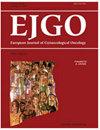A Performance Evaluation of an Optoelectronic Cervical Screening Device in Comparison to Cytology and HPV DNA Testing
IF 0.5
4区 医学
Q4 OBSTETRICS & GYNECOLOGY
引用次数: 0
Abstract
Objective : An optoelectronic screening device (OESD) is evaluated for the detection of cervical intra-epithelial neoplasia (CIN) 2+ lesions in comparison to Liquid Based Cytology (LBC) and high-risk HPV DNA (hrHPV) testing. Methods : In total 506 consecutive women referred because of abnormal cervical cytology or a positive high-risk HPV test, had an examination using OESD, LBC, and hrHPV testing. They were screened in 4 colposcopy clinics in New South Wales, Australia. In a retrospective audit, results were compared to the gold standard of colposcopy and biopsies if required. Sensitivity, specificity, area under the receiver operating characteristic (ROC)-curves, and differences using McNemar tests were calculated. All results were available for comparison on 474 patients. Results : The sensitivity to detect CIN II+ lesions by OESD, LBC and hrHPV-testing was 0.72, 0.81, and 0.88, and the specificity was 0.71, 0.95, and 0.76 respectively. The age- and previous-treatment adjusted area under the ROC curve for OESD was 0.83, for LBC 0.94, and for hrHPV testing 0.89. McNemar’s tests showed no significant difference in sensitivity between OESD and LBC ( p = 0.26), and no significant difference in specificity between OESD and hrHPV-testing ( p = 1.0) amongst patients without previous treatment. Conclusions : The optoelectronic screening device demonstrated comparable sensitivity to high quality cytology conducted in a hospital clinical setting. Specificity was comparable to hrHPV-testing in an approximate primary screening setting. OESD has the advantage of producing an immediate result and being easy to use without need of laboratory equipment. This device can potentially become an important tool in the prevention of cervical cancer, particularly in developing countries and resource-limited settings.与细胞学和HPV DNA检测相比,光电子宫颈筛查装置的性能评估
目的:与液体细胞学(LBC)和高危HPV DNA (hrHPV)检测相比,评估光电筛查装置(OESD)检测宫颈上皮内瘤变(CIN) 2+病变的效果。方法:共有506名因宫颈细胞学异常或高危HPV检测阳性而转诊的连续妇女,使用OESD、LBC和hrHPV检测进行检查。他们在澳大利亚新南威尔士州的4家阴道镜诊所接受了筛查。在回顾性审计中,将结果与阴道镜检查和活检的金标准进行比较。采用McNemar试验计算敏感性、特异性、受试者工作特征(ROC)曲线下面积和差异。所有结果可用于474例患者的比较。结果:OESD、LBC、hrhpv检测CINⅱ+病变的敏感性分别为0.72、0.81、0.88,特异性分别为0.71、0.95、0.76。OESD的年龄和既往治疗调整后的ROC曲线下面积为0.83,LBC为0.94,hrHPV检测为0.89。McNemar试验显示,OESD和LBC之间的敏感性无显著差异(p = 0.26),在未接受过治疗的患者中,OESD和hrhpv检测之间的特异性无显著差异(p = 1.0)。结论:光电筛查装置在医院临床环境中对高质量细胞学检查具有相当的敏感性。在初步筛选中,特异性与hrhpv检测相当。OESD具有立竿见影、使用方便、不需要实验室设备的优点。这种装置有可能成为预防宫颈癌的重要工具,特别是在发展中国家和资源有限的环境中。
本文章由计算机程序翻译,如有差异,请以英文原文为准。
求助全文
约1分钟内获得全文
求助全文
来源期刊
自引率
25.00%
发文量
58
审稿时长
1 months
期刊介绍:
EJGO is dedicated to publishing editorial articles in the Distinguished Expert Series and original research papers, case reports, letters to the Editor, book reviews, and newsletters. The Journal was founded in 1980 the second gynaecologic oncology hyperspecialization Journal in the world. Its aim is the diffusion of scientific, clinical and practical progress, and knowledge in female neoplastic diseases in an interdisciplinary approach among gynaecologists, oncologists, radiotherapists, surgeons, chemotherapists, pathologists, epidemiologists, and so on.

 求助内容:
求助内容: 应助结果提醒方式:
应助结果提醒方式:


